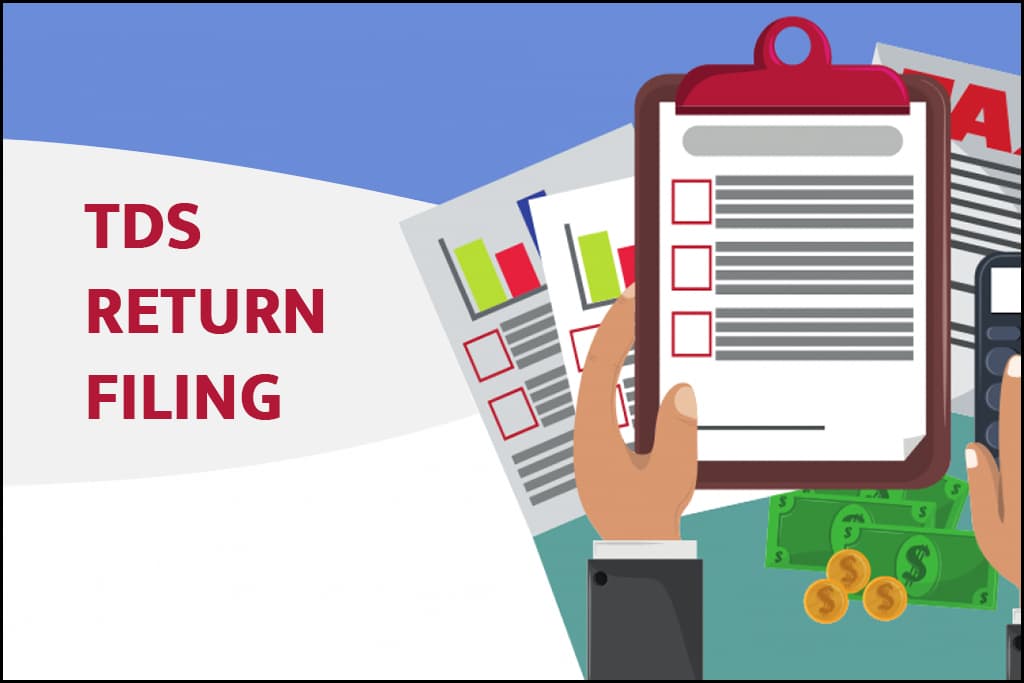
TDS Return Filing
An Overview of Filing Your TDS Return Online
TDS was introduced in order to collect taxes at the source of income. According to this concept, a person (deductor) who is required to make a payment to another person (the deductee) must withhold tax at the source and remit it to the central government’s accountold tax at the source and remit it to the central government’s account. The deductee whose income tax source deductions have been made is entitled to receive credit for the amount so deducted on the basis of Form 26AS or a TDS certificate issued by the deductor. Every quarter, the IT department receives an online TDS return. Every deductor must deposit income tax and file their TDS return on time.
1,436 Total Views
Our Process
Individuals and Businesses: TDS Return
An employer or business with a valid TAN (Tax Collection and Deduction Account Number) can file an online TDS return. Any individual or business who makes a specific payment as defined by the I-T Act is required to deduct tax at the point of sale. The deposit must be made within the time frame specified. Among the payment options are:
- Salary
- Insurance commission
- Earnings from horse races
- Earnings from “Income on Securities”
- Earnings from lotteries, puzzles, and other games
- Payment for the National Savings Scheme, among other things
If TDS was deducted from their income, an assessee can file an e-TDS return. As previously stated, it is the assessee’s responsibility to file by the due date or face a penalty for late filing. The following assessees are eligible to file their TDS returns electronically each quarter:
- Company
- Individuals whose accounts are being audited u/s44AB
- Persons holding a government position
Documents required to file TDS Return online
The following documents must be submitted in order to file TDS returns:
- TAN details
- PAN details
- Last TDS filing information, if applicable
- The time period for which TDS must be filed
- Date of the company’s incorporation
- Number of transactions required to file TDS returns
- A proprietorship, partnership, company, or LLP is the name of the entity.
- To begin, Form 27 A with multiple columns must be completed, and, in the case of a hard copy of the Form, it must be verified along with the E-TDS return that has been filed electronically.
- The tax deducted at the source and the total amount paid must then be correctly filled out and tallied in the following step.
- The organizations’ TANs must be listed on Form 27-A. If the TAN provided is incorrect, the verification process will be complicated.
- When filing TDS returns, the appropriate challan number, mode of payment, and tax details must be included. There will be a mismatch if the challan number or payment date is incorrect, and the TDS returns will need to be filed again.
- The basic form used for filing the e-TDS must be used to ensure consistency. The 7-digit BSR must be entered to facilitate the tallying process.
- TDS returns must be physically submitted to the TIN FC, which is managed by NSDL. In the case of online filing, they can be submitted on the NSDL TIN’s official website.
- If the information provided is correct, a token number or a provisional receipt is issued. This is proof that a TDS return was filed.
- In the event of rejection, a non-acceptance memo is issued along with the reason for the rejection, and the returns must be filed again.
Things to keep in mind before filing your TDS return on time
TDS returns can be filed online by anyone who has TDS deducted from their pay. Return preparation must be completed within the time frame specified because individuals who are deemed to be regular defaulters in India face severe penalties. As a result, submitting the e-TDS return within the time frame specified is critical.
It is critical for the deductor to deposit the subtracted TDS with the relevant details with the relevant government department.
The deadlines for the deductor to deposit the amount and the deductee to file for a TDS refund are listed below. To avoid a penalty, it is critical to stick to the schedule.
Every single person who has made a TDS deduction should file the TDS return online without fail. The deductor is responsible for making quarterly submissions to the Income Tax Department. There are various types of forms available depending on the intent of the TDS deductions made. PAN information for both the deductees and the deductor should be included in the statement. Among other things, the statement should include information about the TDS challan and tax details.
The statement or TDS return is defined in the online TDS return as a summary of every transaction made in relation to the quarterly TDS payments. The deductor should submit this statement to the department of income tax when filing income tax returns.
The submission of TDS returns is required for all deductors. It contains information about the deductor’s TDS deductions and deposits. It should also include PAN card information for both deductees and deductor, tax paid details, TDS challan information, and any other information required by the form.
